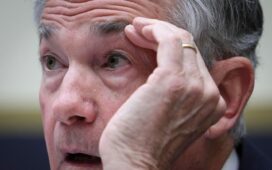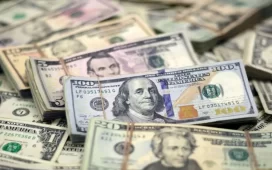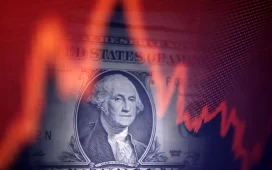(Bloomberg) — The Australian dollar’s late 2023 rally faces a new hurdle this week with inflation data expected to strengthen the case for earlier interest-rate cuts by the Reserve Bank.
Most Read from Bloomberg
The Aussie jumped nearly 10% against the greenback from late October through December as the RBA sounded hawkish while traders priced Federal Reserve rate cuts this year. The rally may struggle to extend if November inflation data Wednesday provides room for the central bank to soften its tone and prompts the swap market to price the first RBA interest-rate cut earlier than in June.
“Market pricing for RBA interest rate cuts looks far too hawkish with them priced to cut very little in 2024/2025 versus peers,” said Tim Baker, Sydney-based head of macro research at Deutsche Bank AG. “Australia’s inflation overshoot isn’t that different to peers. If inflation is on the softer side, the market will gain conviction that the RBA is done.”
Australia’s consumer inflation slowed 4.5% November as it moderated for a second straight month, according to a median estimate in a Bloomberg survey.
Weak inflation would validate asset managers’ long-held pessimism on the Aussie. Even though they trimmed these positions to half of what they were in mid-September, they still held 42,658 contracts betting against the currency as of January 2, according to Commodity Futures Trading Commission data.
These investors may be taking solace from the fact that the Aussie dollar’s slow stochastics, a momentum indicator has also turned bearish, after the currency’s rally stalled under resistance at 69 US cents.
Aussie Turnaround?
Baker sees the Aussie dollar weakening to 65 US cents this quarter. It closed last week at 67.13 cents last week, easing from a five-month high of 68.71 touched in late December as traders grew concerned that the Fed rate cuts this year may not be as deep as expected.
US inflation data, also due this week, may put additional pressure on the Aussie dollar if it spurs investors to further dial back on their expectations for Fed rate cuts.
Another factor that may spur the RBA to cut rates sooner than currently expected is Australia’s real household income picture, which Baker describes as “quite poor.” Internal RBA documents say consumers have become “more budget conscious in their spending,” supporting the point.
Nomura also is signaling that the Aussie dollar’s upside has run its course. It said in a Jan. 3 note that the bank has exited long Aussie dollar trades against the greenback and euro, citing factors including the market’s aggressive Fed rate cut path compared with its own, ongoing worries over China’s economy and its below consensus Australia GDP forecast for its move.
Here are the key Asian economic data this week:
-
Monday. Jan. 8: No major economic release
-
Tuesday, Jan. 9: Australia retail sales and building approvals, Japan household spending and Tokyo CPI, South Korea BoP current account balance, Taiwan trade balance
-
Wednesday, Jan. 10: Australia Nov. CPI and job vacancies, Japan labor cash earnings
-
Thursday, Jan. 11: Bank of Korea interest rate decision, Australia trade balance, New Zealand building permits, Malaysia industrial production
-
Friday, Jan. 12: China CPI, PPI and trade balance, Japan current account balance, Australia home loans, India CPI and industrial production
Most Read from Bloomberg Businessweek
©2024 Bloomberg L.P.





